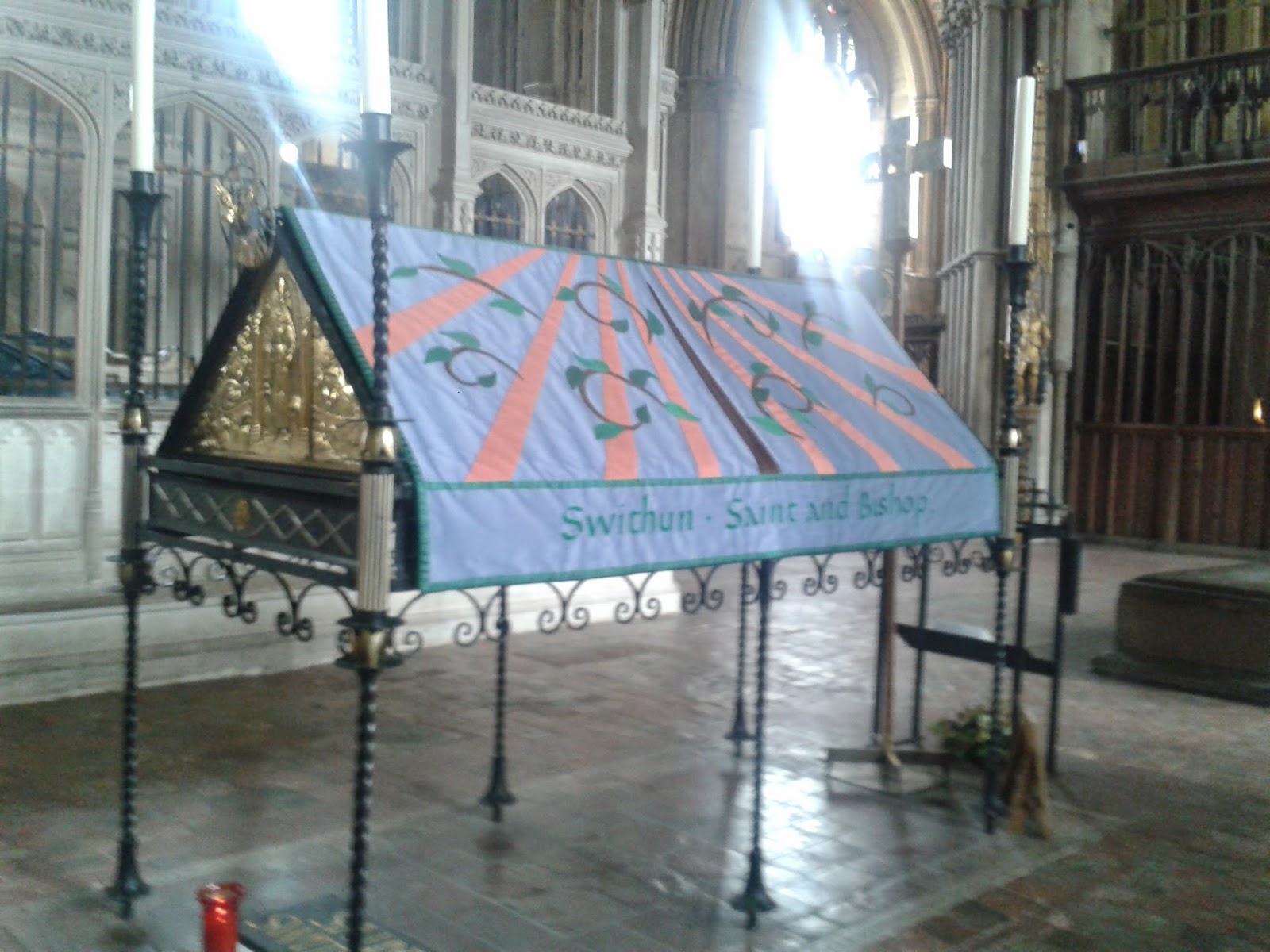Winchester Cathedral is one of the largest in England and is the longest Gothic Cathedral. It is dedicated to Saint Peter, Saint Paul, the Holy Trinity and Saint Swithun who was a local man born around the year 800. After he was ordained he served in the royal household becoming an important advisor to the King. He became the 17th Bishop at Winchester Cathedral in 852 until he died in 862 after which he was associated with many miracles which saw him declared a Saint. This has led to his shrine in Winchester becoming a site for pilgrimage.
While he was Bishop he rebuilt Winchester’s East Gate bridge over the River Itchen and whilst he was visiting workmen for this legend says he found a poor woman who had dropped a basket of eggs which had broken – he mended the eggs and for this miracle he became famous. Tradition also has it that he took a young Alfred on pilgrimage to Rome.
Upon his death he was buried in a simple grave by the west door of the Saxon Cathedral (which is near to the north of the present Norman Cathedral).
When his body was moved on 15th July 971 to a site inside the Cathedral legend says that Saint Swithun generated a storm in protest and thus the day became Saint Swithun’s day and led to the poem:
St Swithun’s Day, if thou dost rain,
For forty days it will remain:St Swithun’s Day,
if thou be fair,
For forty days ’twill rain nae mair.
His remains were transferred again to the new Norman Cathedral in 1093.
While he was Bishop he rebuilt Winchester’s East Gate bridge over the River Itchen and whilst he was visiting workmen for this legend says he found a poor woman who had dropped a basket of eggs which had broken – he mended the eggs and for this miracle he became famous. Tradition also has it that he took a young Alfred on pilgrimage to Rome.
Upon his death he was buried in a simple grave by the west door of the Saxon Cathedral (which is near to the north of the present Norman Cathedral).
When his body was moved on 15th July 971 to a site inside the Cathedral legend says that Saint Swithun generated a storm in protest and thus the day became Saint Swithun’s day and led to the poem:
St Swithun’s Day, if thou dost rain,
For forty days it will remain:St Swithun’s Day,
if thou be fair,
For forty days ’twill rain nae mair.
His remains were transferred again to the new Norman Cathedral in 1093.
Winchester became the second most popular site of pilgrimage in Mediaeval England to the annoyance of the Monks there who, begun at some time around 1202 (and taking about 30 years to build), had another entrance to the Cathedral built in the North transcript and a screen built to keep them away from the monks (the Pilgrims were therefore barred from the choir and nave which were reserved for the monks). Thus the Pilgrims' Way linked the two most popular Pilgrim destinations in England at the time.
In 1310 Saint Swithun's Priory built a guesthouse for the use of the visitors (which has been called the 'Pilgrims' Hall' ' since the Victorian era) but it is unclear if the common Pilgrim was able to use it.
Winchester is also the starting point for the Pilgrims' Trail a 155 mile route that finishes at Mont St Michel in Normandy, France. The route is marked by green way markers in Hampshire taking walkers from Winchester to Bishop's Waltham to Southwick and then to Portsmouth where ferries are caught to France and Way markers become blue.
The cult of saint Michel was popular in Britain from the 9th century and the Pilgrims walking this way were called Miquelots and many Pilgrims on their way to Santiago.





Comments
Post a Comment